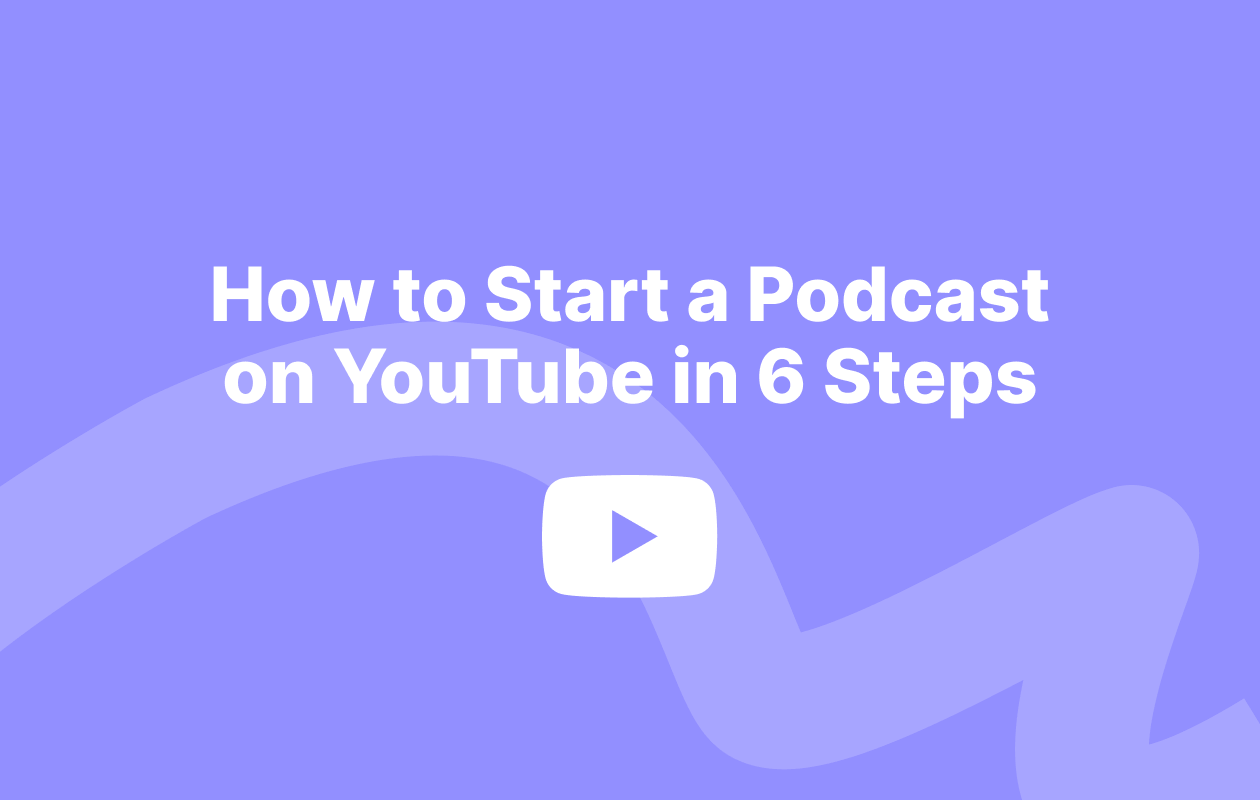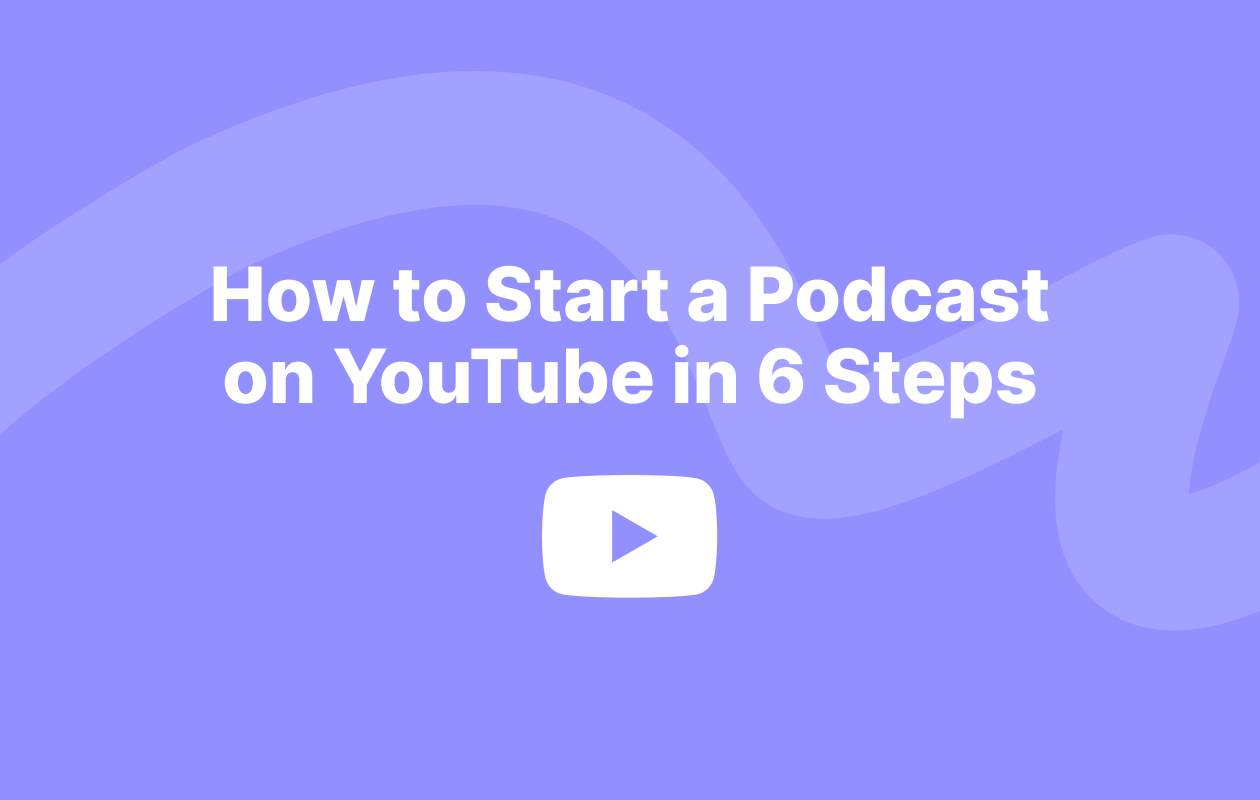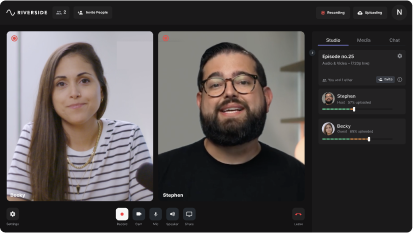Last Updated
August 1, 2023
YouTube for Podcasting: Why Start a Video Podcast on YouTube

YouTube is entering the podcast space in a big way.
They are highlighting video podcasts on a dedicated landing page.
And they’re investing hundreds of thousands of dollars into podcasts.
And why?
To entice creators to make more video podcast content on their platform.
What does that mean for you as a podcast creator, especially if you’ve been an audio-only show for years?
There are some huge benefits to being on YouTube, and in this article you’ll find some things to consider as you create or add video to your show.
What is YouTube Doing with Podcasts?
First off, let’s acknowledge the elephant in the room:
Details are still scarce on how YouTube will highlight and incorporate podcasts on the platform. We simply don’t know everything about their plans, intentions, and goals.
But here’s what we do know…
In August, a new landing page appeared specifically named Podcasts.

Currently, there’s no way to submit your show to be highlighted or included on this page.
YouTube appears to be surfacing popular shows and episodes that already have video content on the platform.
We also know that YouTube has started investing in podcast creators.
Earlier this year, YouTube offered individual podcast creators up to $50,000 to produce video content on the platform, and up to $300,000 for podcast networks.

Why Should Podcasters Want to Create on YouTube?
You may be unsure about YouTube getting into the podcast game, especially if you’re an audio-only show.
But there are massive benefits to being on the platform.
Discoverability
YouTube is the second largest search engine after Google itself. And if you didn’t know, Google owns YouTube. That’s why for many search results, you will find YouTube videos pretty high in the recommended results.
That means if your podcast about medieval attire is on YouTube, those searching that topic on Google can more easily find your show.
Google will always prioritize content on its own platforms, namely YouTube.
Even if you continue producing an audio-first podcast, uploading that episode with a static image to a YouTube channel will increase your chances of being found by potential listeners.
Monetization
YouTube has one of the most consistent and creator-focused monetization models available.
Channels with 1,000+ subscribers and at least 4,000 hours of watch time can monetize their channel by allowing YouTube to display ads in videos.
For podcast creators, sponsorships are typically sold for a single, or 2-3 episode run.
This can make it difficult to monetize a podcast’s back catalog (which could be hours of content).
With YouTube ad monetization, all your past video podcasts will continue to earn money regardless of current sponsorship deals.
The longer the video, the more ads can be placed throughout. This also increases your possible revenue.
Since podcasts are typically longer than 30 minutes, episodes are great pieces of content for YouTube monetization.
Plus, you as the creator never have to search out or book sponsors (although you can do that in addition to the ad revenue).
Just click the monetize button and you’ll start earning for every view.
Why Should You Be Quick to Move on YouTube?
Platforms don’t build new features for no reason.
So when YouTube launches something new, you can have high confidence that they’ll promote the people who use it.
Creators should take the opportunity and be one of the first to share content early.
Typically these new features are pushed heavily by the platform, and being one of the first to participate will give you an advantage over other creators.
And with podcasts being a recent addition to YouTube, your show can stand out with less competition (as opposed to the already-flooded directories like Apple Podcasts and Spotify).
With larger names like Amazon and iHeart Radio producing audio-only content, you can stand out from the pack by creating video podcast content on YouTube.
Should You Add or Start a Video Podcast?
Quick answer: most likely.
If you’re in the planning stages for starting a new show, try to incorporate video right off the bat.
You could also pivot your current shows to include a video component. Start small, and build from there.
Using a tool like Riverside makes it easy to record your audio podcast, turn on your webcam, and create a video version for YouTube.
You can capture quality content in up to 4K video resolution and you can edit your videos as easily as editing a transcript with our ai text-based video editor. We've also got tools to customize your video layout. You can even export a side-by-side video version that’s ready for YouTube right inside the Riverside studio.
On the other hand, making a compelling video version of your show has benefits in addition to just being on a YouTube channel.
Clippable Videos
Having video of yourself and co-hosts opens the door to creating short clips of your podcast to share on TikTok, Instagram, and other social media platforms.
YouTube recently added their own vertical, scrolling-style video content called Shorts.
YouTube Shorts have the potential to be seen by exponentially more people than your standard channel content.
And because they’re posted from the same account, it gives viewers easy access to find and subscribe to your channel.
You can even create a Short with just a few taps when viewing a video in the YouTube app.
These short, 60-second clips are a powerful way to get your content in front of a wider audience and increase your chances of being discovered.

There are many stories out there of podcasts sharing a viral clip on TikTok and adding thousands of subscribers to their audio podcast.
For a quick Shorts solution, use Riverside's Magic clips creator. You can seamlessly turn your long-form recordings into short shareable content at the touch of Ai. Our Ai finds key moments in your recordings and transforms them into 15-90 second long clips.
Additional Benefits to Using YouTube Podcasts
YouTube and podcasting actually began around the same time.
In 2005, YouTube officially launched while podcasts were added to the iTunes directory.
Despite being roughly the same age, the number of users and hours watched on YouTube vastly outweighs podcasts.
With YouTube positioning itself as a player in podcasting, we may see podcasts become a video-first medium.
Every podcast creator should consider adding a video component to their show.
A common concern is the increased workload of incorporating video. While it may benefit your show to invest in better video equipment and lighting, you can start right now with the equipment you have on-hand.
Content you create with video can be repurposed several more times than an audio-only version of your show.
Continue to publish the MP3 file to your RSS feed and podcast directories. But consider creating multiple Instagram Reels, TikToks, and YouTube Shorts with your full episode content.
When you use a platform like Riverside, you can even offer private live streams of your show to paid supporters through Patreon, Memberful, or sending an audience link to your email subscribers.
While you can share an audio-only clip with captions to social media platforms, having a simple video of you and your co-hosts can greatly increase your chances of virality.
Audio Only or Add Video?
So should you stick with your audio-only podcast or add video, too?
It doesn’t have to be an either/or decision.
One of the biggest challenges of moving to a video podcast is calling attention to something visually during the show, which would immediately make audio-only listeners feel disconnected.
It may take some practice, but you can plan your show with the intention of making a great experience for those just listening. And you can still keep the camera rolling for the express purpose of uploading to a YouTube channel and sharing clips on social media.
With YouTube starting to prioritize podcasts, it will be worth the effort.


















 (1).webp)
.webp)
.webp)








